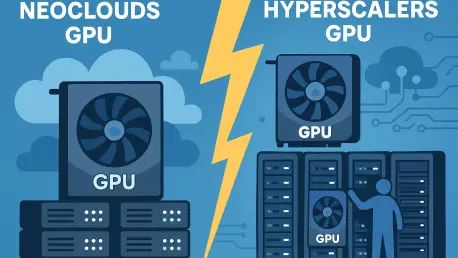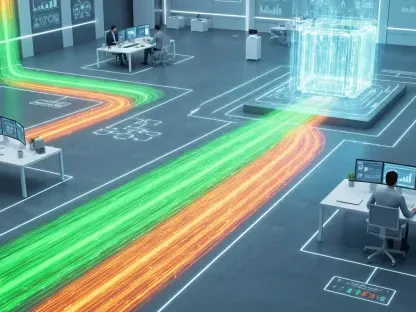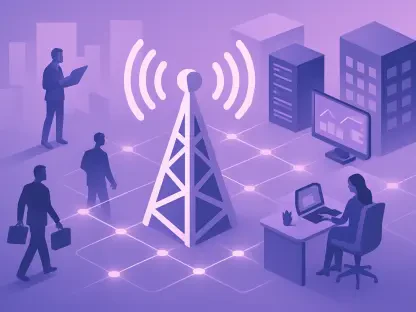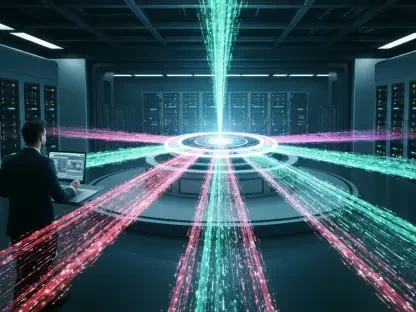In an era where artificial intelligence and machine learning applications are redefining technological capabilities, the demand for robust GPU services has skyrocketed. The spotlight now shines on the burgeoning market of GPU processing-as-a-service (GPUaaS), where new players known as neoclouds are vying to reshape the landscape long dominated by hyperscale giants like Amazon Web Services, Microsoft Azure, and Google Cloud Platform. While the hyperscalers possess established infrastructure and expansive service portfolios, neocloud providers such as CoreWeave, Lambda Labs, Crusoe, and Nebius are making waves with specialized offerings and competitive pricing models. This sparks a crucial question in the tech industry: can neoclouds surpass these hyperscalers in the race for GPU supremacy, especially as the GPUaaS market is poised for transformative growth?
The Rise of Neoclouds: A New Force in Cloud Computing
As the global GPU-as-a-service market braces for an exponential increase—from a valuation of $3.23 billion in 2023 to an expected $49.84 billion by 2032—neocloud providers are positioning themselves to capture a significant share of this growth. Unlike their hyperscaler counterparts, neoclouds lack extensive legacy systems, allowing them to focus intimately and efficiently on GPU services. Many neoclouds have roots in niches like crypto-mining or data center management, which they have adeptly transformed into cutting-edge GPUaaS offerings. This foundation in specialized environments empowers neoclouds to adapt swiftly, leveraging their expertise to meet the mounting demands of AI-driven workloads while offering substantial cost savings—a major advantage for businesses tightly controlling expenses.
A key advantage of neoclouds is their ability to streamline operations, thus enabling substantially lower operational costs compared to the hyperscalers. According to various evaluations, the cost of on-demand Nvidia DGX #00 GPU instances from hyperscalers averages $98 per hour, while neoclouds offer similar services for as low as $34 per hour. This stark difference highlights the appeal of neoclouds as cost-effective alternatives, especially for enterprises keen on optimizing their AI project budgets. Despite this cost advantage, numerous enterprises remain hesitant to transition completely from hyperscalers due to their well-established infrastructure, comprehensive management tools, and assured regulatory compliance. Yet, as neoclouds continue refining their offerings, the balance between legacy trust and innovative efficiency may well tilt.
Competitive Differentiators for Neoclouds
Prominent neocloud providers distinguish themselves not only through pricing but also through unique propositions tailored for AI-centric enterprises. CoreWeave, a leading neocloud, boasts significant backing with more than $7 billion in funding and strategic investment from Nvidia—a testament to its technological promise and market potential. With a diversified clientele that includes tech behemoths like Microsoft and OpenAI, CoreWeave’s credibility in the GPUaaS sector is well established. It demonstrates strong financial performance, with annual projected revenues aiming upwards of $5 billion, underscoring its influence in the competitive arena. This momentum propels CoreWeave to invest further in expanding capabilities and enhancing service offerings to retain existing clients and entice new ones.
Lambda Labs adopts a distinct approach, branding itself as the “AI developer cloud.” This strategic positioning is bolstered by Nvidia’s investment and focuses on delivering cloud-based GPUs and on-premises solutions, appealing to enterprises valuing low-latency, high-speed computing. Lambda distinguishes itself through user-friendly, innovative features like ‘one-click clusters,’ simplifying complex deployments for its customers. The combination of competitive pricing and a deep understanding of AI developer needs positions Lambda favorably in its quest to carve out its share of the GPUaaS market. By targeting AI developers specifically, Lambda Labs provides tailored solutions that address the precise needs of its user base, fostering customer loyalty and driving innovation within this specialized niche.
Navigating Challenges in an Evolving Market
While neoclouds are adept at leveraging cost and efficiency to attract customers, challenges remain. Hyperscalers still hold sway, backed by strong security protocols and comprehensive capabilities that include robust compliance and management tools trusted by IT teams worldwide. Established enterprise relationships with hyperscalers pose a challenge, creating barriers to neocloud adoption despite price advantages. Transitioning from a hyperscaler to a neocloud often involves navigating concerns over security and regulatory compliance, which many enterprises prioritize even over potential cost savings. However, these hurdles have not deterred neoclouds from seeking innovative ways to expand their influence, such as emphasizing sustainable practices or differentiating through unique technological offerings.
Amidst this backdrop, the neocloud market grapples with the surging demand for GPUs, stemming from widespread AI proliferation. Competition for Nvidia’s latest chips is heated, not only amongst neoclouds themselves but also against hyperscalers and enterprises seeking in-house deployment. As GPU prices fluctuate—illustrated by the transition from $8 to under $2 per hour—this cost pressure drives innovation and diversification within the neocloud sector. Vendors like Nebius have introduced cost-effective Nvidia GPU models, prompting neoclouds to continually evolve their offerings beyond mere cost reductions. This dynamic pushes providers to explore enhanced services that deliver additional customer value, from advanced AI model deployment capabilities to proprietary optimization and support features.
The Future of GPUaaS: Collaboration and Specialization
The global GPU-as-a-service market is on the cusp of significant expansion, with forecasts predicting a jump from $3.23 billion in 2023 to an impressive $49.84 billion by 2032. Neocloud providers, unlike hyperscalers that are weighed down by legacy systems, are strategically positioned to capitalize on this growth. Without the constraints of outdated infrastructures, neoclouds can focus more efficiently on GPU services, having evolved from niches such as crypto-mining and data center management into advanced GPUaaS solutions. This specialized expertise allows neoclouds to adapt quickly to the demands of AI workloads while offering tangible cost savings, a key benefit for businesses keen on expense management.
One pivotal advantage of neoclouds is their ability to enhance operational efficiency, resulting in notably lower costs than hyperscalers. Research shows that on-demand Nvidia DGX #00 GPU instances cost $98 per hour with hyperscalers but just $34 per hour with neoclouds. Despite these savings, companies are cautious about fully shifting due to hyperscalers’ established infrastructure and regulatory compliance. However, as neoclouds refine their offerings, they might tilt the balance toward innovative efficiency over legacy trust.









